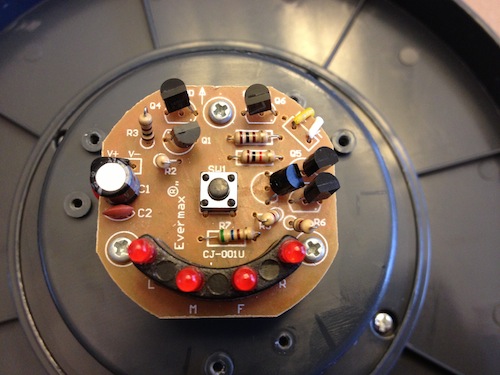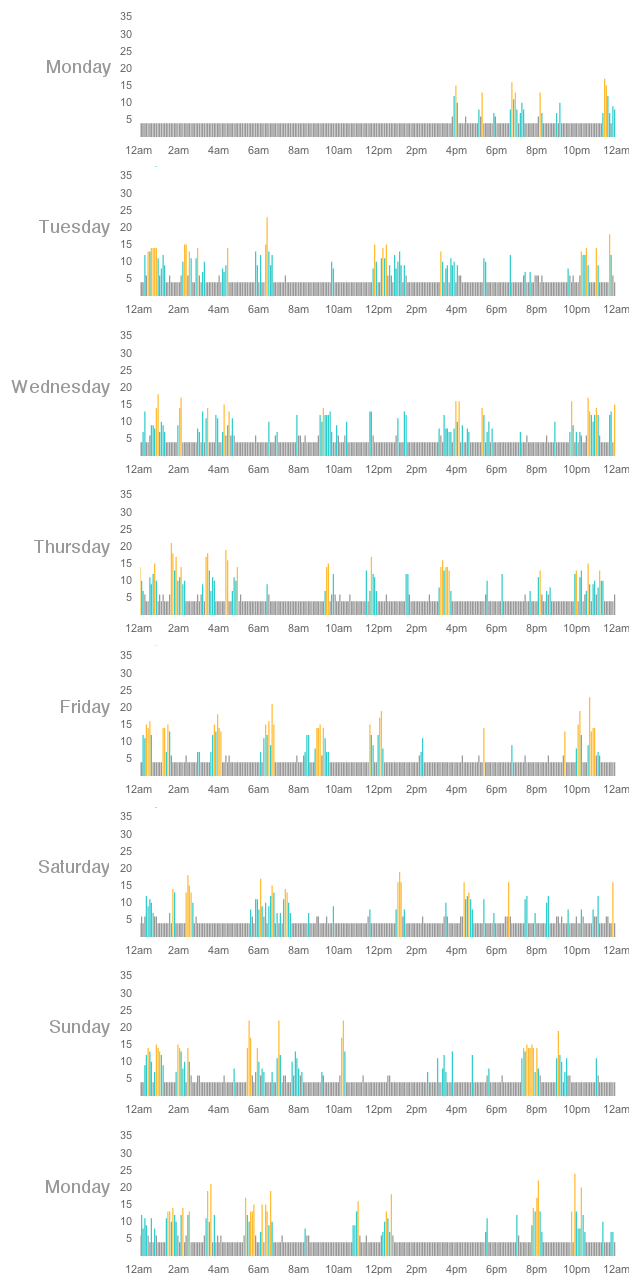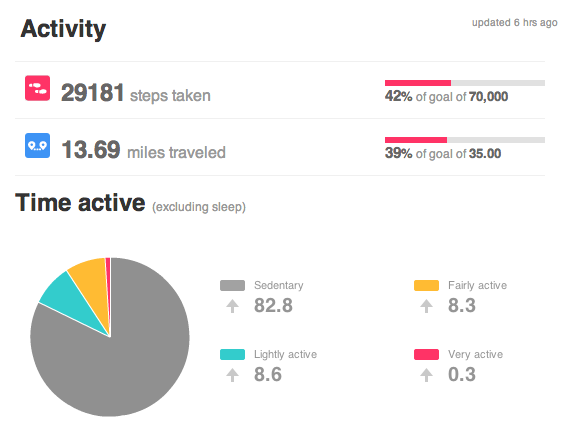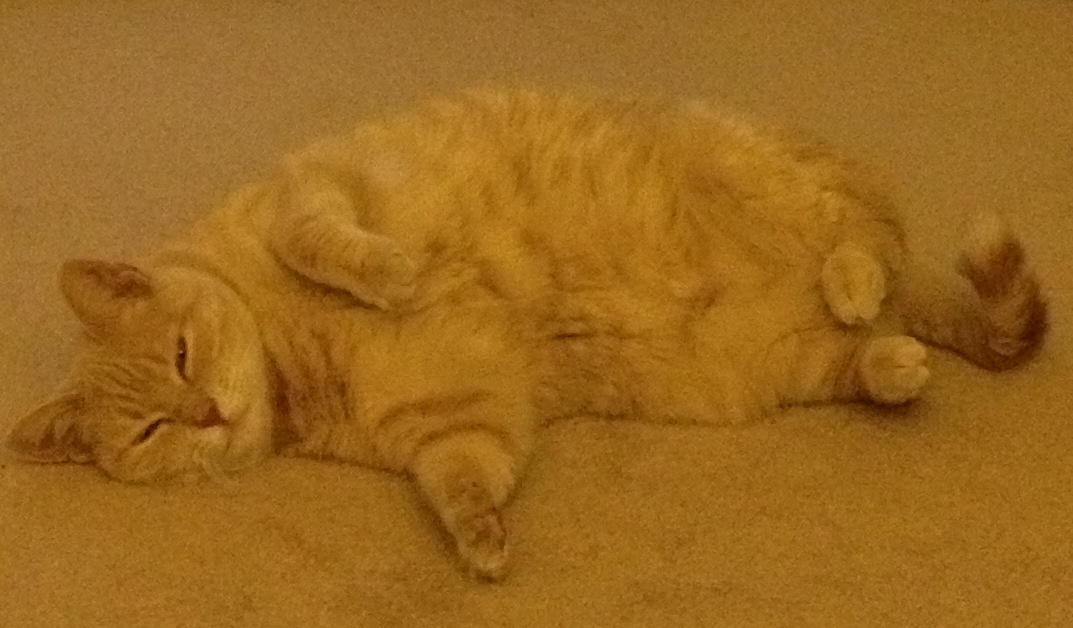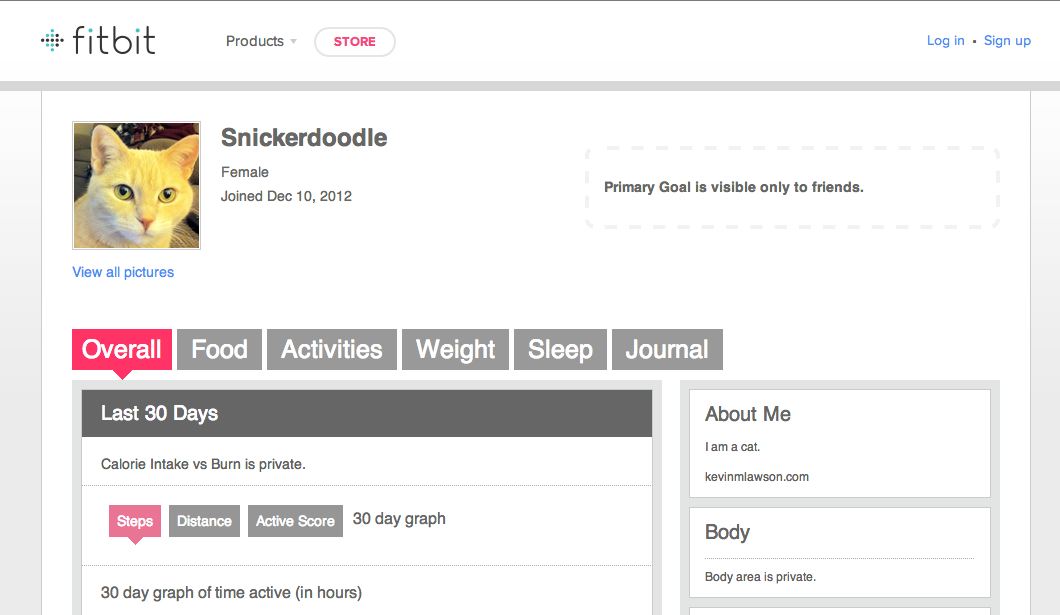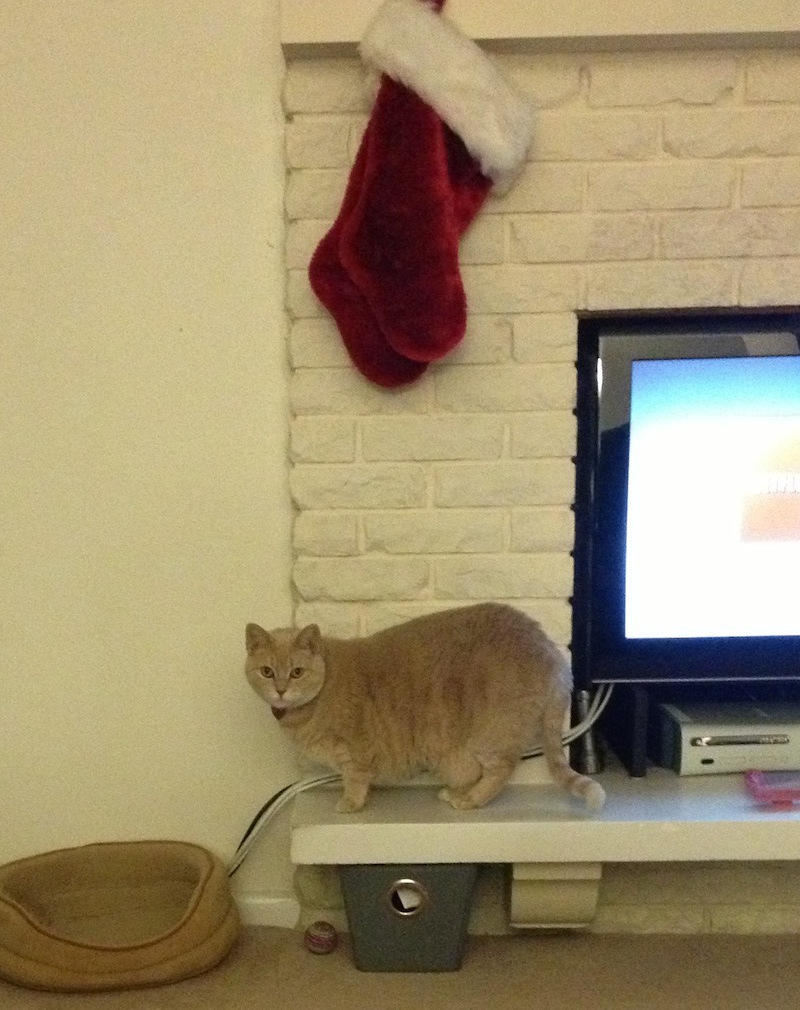
Another week of baseline data and the first tests of a new toy.
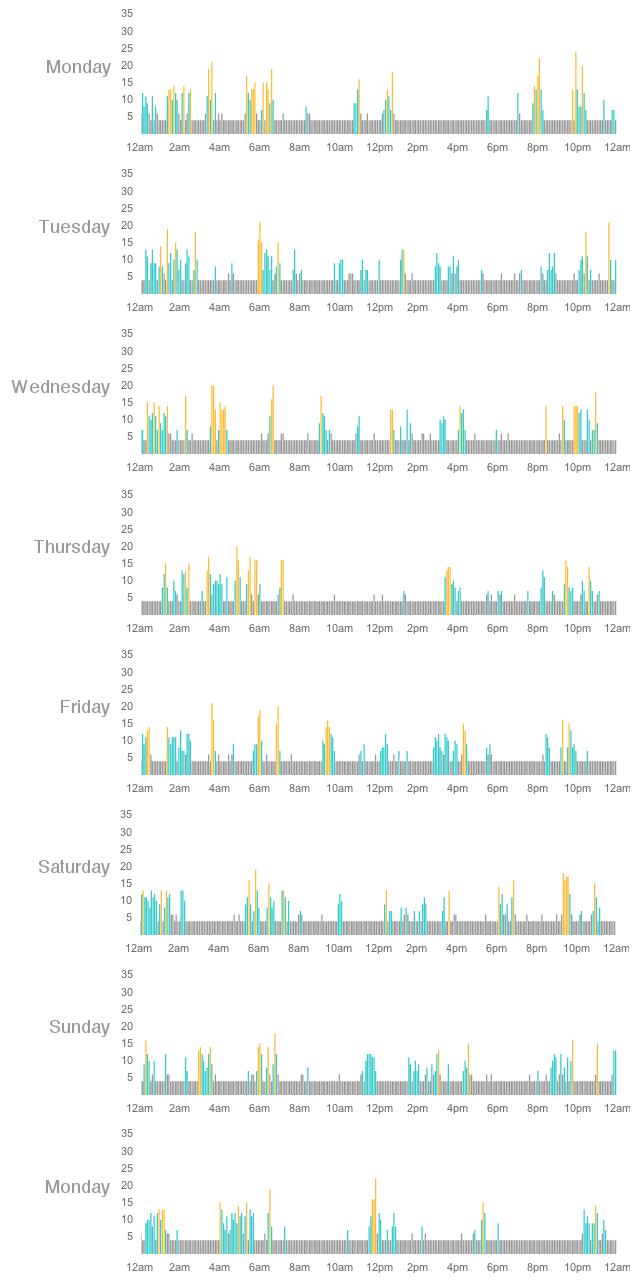
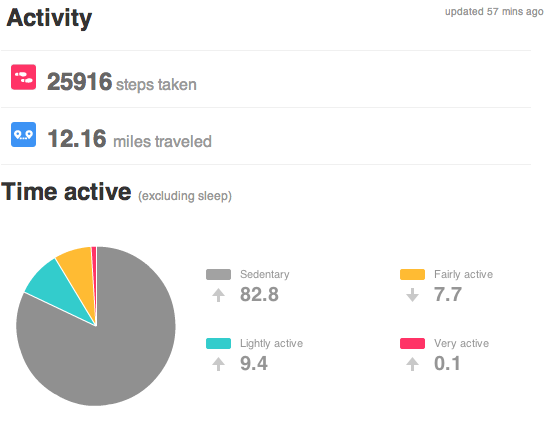
Observations:
- Several people who looked at last week’s data have pointed out that Snickers seems to go nuts from about midnight to 3 A.M. The same pattern continues this week. This definitely matches up with our anecdotal experience.
- Thursday’s daily breakdown shows what I initially thought was a swathe of pure laziness, but Thursday’s total step count is similar to that of other days. She was likely resting after an active night (of running up and down the hallway, batting cat toys beneath furniture, etc.).
Notes:
- Monday (24 Dec, at bottom) was once again charge-the-Fitbit day, this time from 8-10 P.M.
- Though I found a wonderfully-titled paper that would help in estimating Snickers’ stride length, I am still unsure how the Fitbit tracker’s steps correlate to actual cat steps, so the distance and step numbers remain dubious.
Toy: Undercover Mouse
Snickers has a few toys already: a scratching post, a toy mouse suspended from the ceiling with elastic, and a menagerie of other stuffed fabric playthings; usually mouse-shaped and usually missing ears or appendages. For this experiment I wanted a toy that would cause a noticeable bump in measurable activity. A buddy of mine recommended an Undercover Mouse.
Snickers’ initial impressions were less than favorable, probably due to the sound of the motor. My wife was able to gradually introduce her to it later and now she loves it. But if we just left it on 24/7 she would likely grow bored of it fairly quickly. The best way to exercise a cat with this toy may be to turn it on several times during the day and let the cat play with it long enough to burn some calories but not long enough for the cat to lose interest. If you have an erratic schedule you could theoretically do this manually, but no one has time for such things.
As soon as some new parts arrive, the engineering phase of this experiment will begin.
